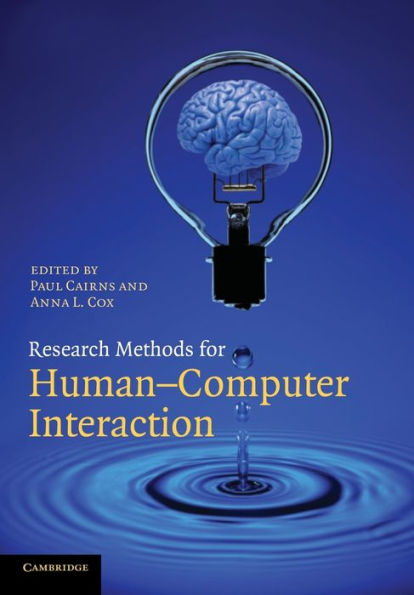Research Methods for Human-Computer Interaction
Human-Computer Interaction draws on the fields of computer science, psychology, cognitive science, and organisational and social sciences in order to understand how people use and experience interactive technology. Until now, researchers have been forced to return to the individual subjects to learn about research methods and how to adapt them to the particular challenges of HCI. This book provides a single resource through which a range of commonly used research methods in HCI are introduced. Chapters are authored by internationally leading HCI researchers who use examples from their own work to illustrate how the methods apply in an HCI context. Each chapter also contains key references to help researchers find out more about each method as it has been used in HCI. Topics covered include experimental design, use of eyetracking, qualitative research methods, cognitive modelling, how to develop new methodologies and writing up your research.
1100947790
Research Methods for Human-Computer Interaction
Human-Computer Interaction draws on the fields of computer science, psychology, cognitive science, and organisational and social sciences in order to understand how people use and experience interactive technology. Until now, researchers have been forced to return to the individual subjects to learn about research methods and how to adapt them to the particular challenges of HCI. This book provides a single resource through which a range of commonly used research methods in HCI are introduced. Chapters are authored by internationally leading HCI researchers who use examples from their own work to illustrate how the methods apply in an HCI context. Each chapter also contains key references to help researchers find out more about each method as it has been used in HCI. Topics covered include experimental design, use of eyetracking, qualitative research methods, cognitive modelling, how to develop new methodologies and writing up your research.
71.0
In Stock
5
1

Research Methods for Human-Computer Interaction
260
Research Methods for Human-Computer Interaction
260Paperback(New Edition)
$71.00
71.0
In Stock

Product Details
| ISBN-13: | 9780521690317 |
|---|---|
| Publisher: | Cambridge University Press |
| Publication date: | 08/21/2008 |
| Edition description: | New Edition |
| Pages: | 260 |
| Product dimensions: | 6.80(w) x 9.60(h) x 0.60(d) |
About the Author
What People are Saying About This
From the B&N Reads Blog
